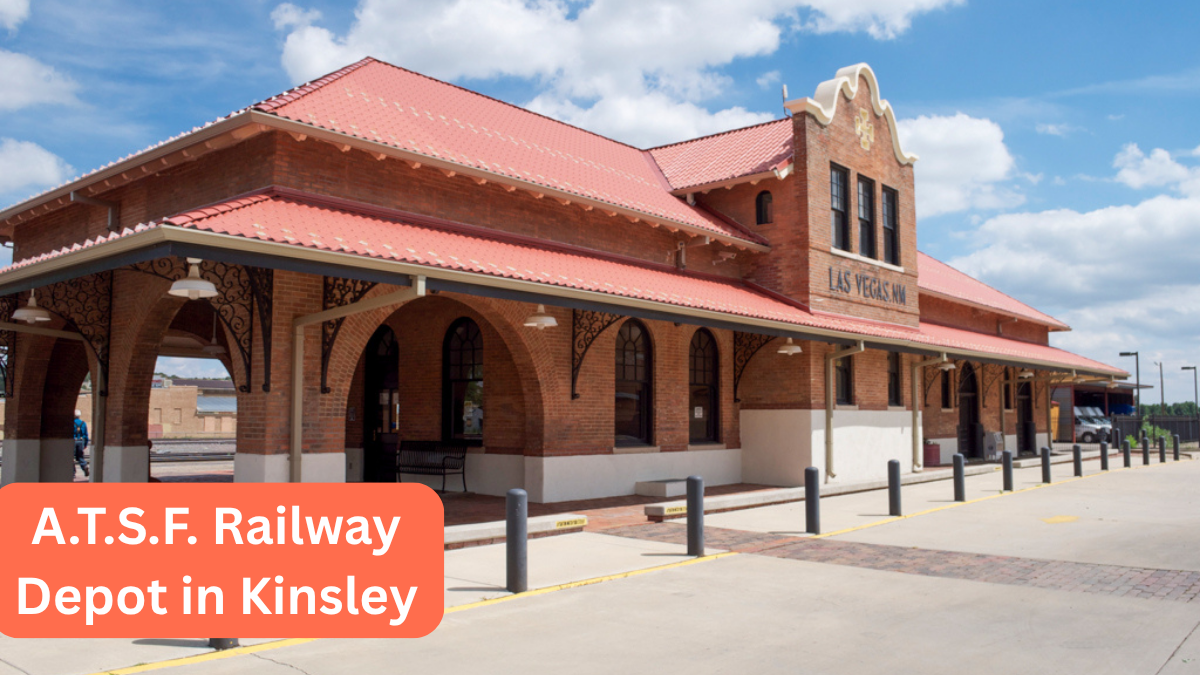In March 2022, something very special happened in the small town of Kinsley, Kansas. A retired railroad worker named John Vician from Crystal Lake, Illinois, reached out to the Kinsley Public Library with a generous offer. He had in his possession twelve original architectural drawings of the 1887 Atchison, Topeka and Santa Fe (A.T.&S.F.) Railway Depot in Kinsley.
These were not just copies or blueprints. These were the real deal—hand-drawn in ink on linen paper, each measuring approximately 25 inches by 36 inches. That’s more than two feet wide and three feet tall! These beautifully detailed drawings showed everything from the front elevation of the depot to tiny features like windows, skylights, and chimneys. They were a rare, historic treasure from a time when train travel helped shape the American Midwest.
A Piece of Railroad Heritage
Built in 1887, the Kinsley depot served as a vital connection point for passengers, goods, and mail. Atchison, Topeka and Santa Fe Railway (often called the Santa Fe) was one of the largest and most influential railroads in U.S. history. These drawings offered a fascinating glimpse into the past—how buildings were constructed, how spaces were designed, and what was important in train station architecture more than 135 years ago.
Thankfully, the library didn’t have to figure it all out alone. They received help from architect and historian Ed Carlson, who provided the expertise needed to understand the historical value and coordinate the acquisition. Thanks to his guidance and the community’s support, the library accepted Vician’s offer and took steps to preserve these important documents.
Bringing the Drawings to Life
Once the drawings arrived, the Kinsley Public Library acted quickly to ensure they were preserved and shared with the public. All twelve drawings were professionally scanned, creating digital versions that could be saved and shown without risking damage to the originals.
Then, the library selected four of the most striking pieces and reprinted them at full size to put on display in the building. Visitors can now walk in and see the same architectural details that builders saw over a century ago. Imagine standing in front of a huge drawing of the front elevation of the depot or peering into a half-plan of the skylight—it’s like stepping back into the 1880s!
Community-Backed and Kansas-Preserved
The project wasn’t just a library effort. Local donations poured in from Kinsley residents who understood how valuable this history was. These generous contributions helped cover the cost of acquiring the drawings and producing display versions.
Because of this community support, the library was also able to do something very special: they donated the original drawings to the Kansas State Historical Society. This ensured that the drawings would be preserved properly in a climate-controlled facility, protected from damage and available to researchers and historians for generations to come.
What You Can See Today
All twelve drawings offer a unique look at different parts of the depot’s design. Here are just a few highlights from the collection:
- Front Elevation: The main view of the building from the street.
- Rear Elevation: The backside of the structure, often overlooked but still full of detail.
- East End Elevation and Longitudinal Section: Side views and interior cutaways.
- Foundation and Roof Plans: Showing how the building was supported and covered.
- Ground Floor Layout: Room placements, doors, and walls.
- Detailed Features: Including chimney designs, window placements, skylight plans, and more.
Each drawing reveals something new about how the depot functioned—not just as a building, but as a hub of community life.
Extra Resources for the Curious
If you’re interested in seeing more of Kinsley’s railroad past, you can also explore a companion exhibit on the library’s website. Posters explain the historical background and function of the depot, and there’s also a fascinating 1884 A.T.S.F. Railroad Mileage and Elevation Profile available for viewing. These materials help connect the depot’s story to the larger development of railroads in the American West.
(Tip: To make the posters legible online, press Control + on your keyboard to zoom in.)
Conclusion
Thanks to the kindness of John Vician, the knowledge of Ed Carlson, the support of the Kinsley community, and the stewardship of the Kansas State Historical Society, a beautiful and rare piece of history has been saved.
The 1887 architectural drawings of the Kinsley Depot are more than just papers—they’re windows into the past. They show us how important the railroad was to small towns like Kinsley and how design and detail mattered, even in utility buildings like train depots.
Whether you’re a railroad enthusiast, a history buff, or just someone who loves stories from the past, this collection is a reminder that preserving history is a shared journey—one that starts with curiosity and ends with community pride.
